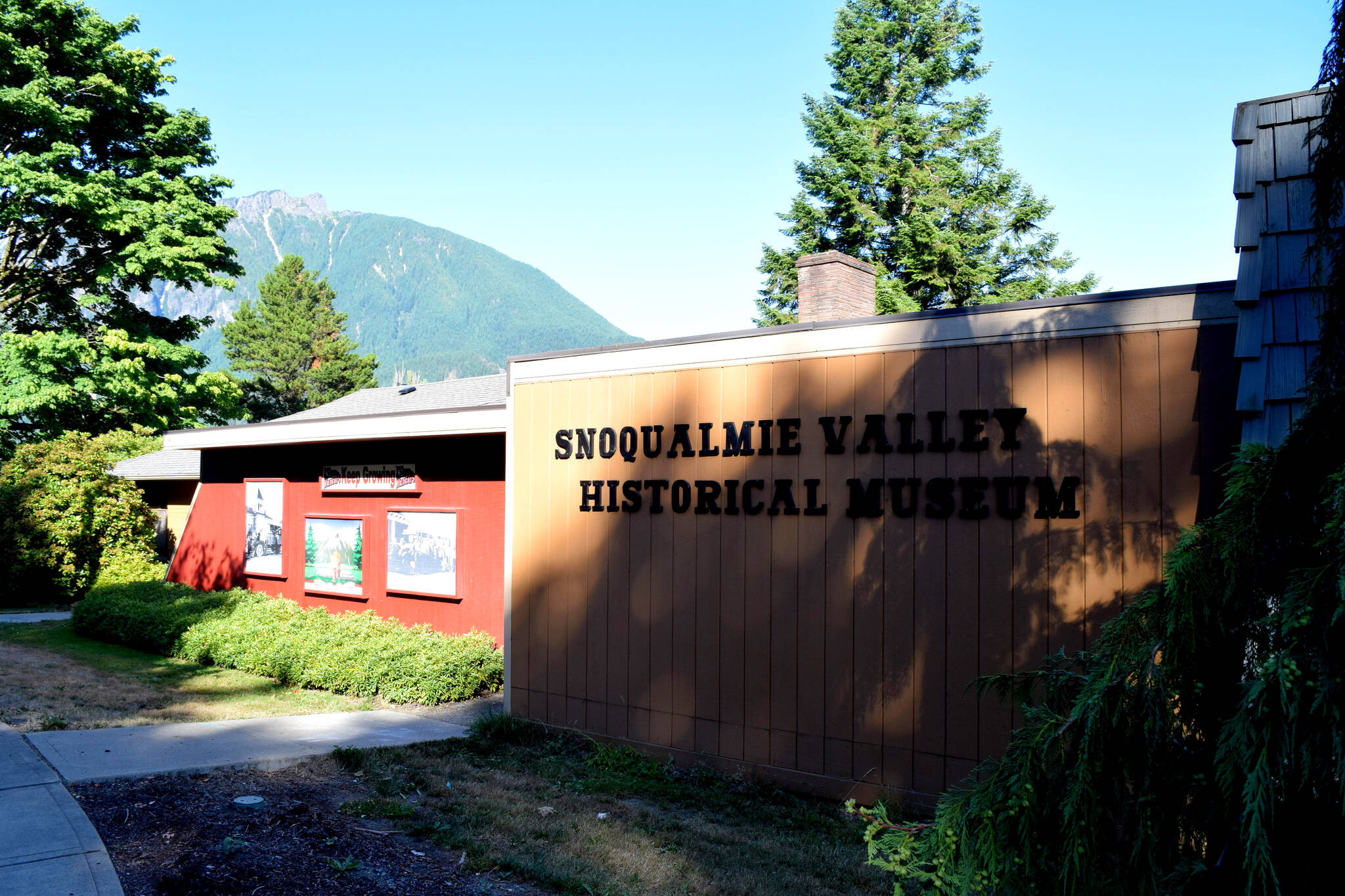What does the future hold for the Snoqualmie Valley Historical Museum?
That’s what members of the its staff and board of directors are trying to figure out.
The museum itself has reached somewhat of a decision-point. Kevin and Beth Burrows, a husband-wife duo who collectively serve as board president and vice president, say in its current building, the museum is bursting at the seams. Thousands of artifacts ranging from photos and journals to railroad and mill equipment have begun to exceed the capacity of the museum’s longtime home.
They’re considering changes, such as a new building, and looking to find a clear vision for future programming. They’re aiming to create a robust strategic plan and gain a better understanding of what’s missing.
To do that, they’ve enlisted the public’s help. Alongside a consultant, they completed a survey asking about the museum, what its role in the community should be and what its collection and displays focus on. They’ll use that data to inform an upcoming strategic plan.
“The Valley has grown so much, so we don’t know what the community actually wants,” Kevin Burrows said last month. “We don’t just want to guess at it. We’re trying to be a data drive.”
What the museum could or should become is anyone’s guess. It could focus on the railroad, natural history of Mount Si or even add audio tours, Burrows said: “Everyone’s got a different answer.”
Even among the museum’s board members, there are disagreements about what should come next.
“We’re still trying to define our future,” Kevin said.
The Snoqualmie Valley History Museum traces its origin to a collection of photos organized by Ada Snyder Hill, a teacher at North Bend High School. Hill started the collection inside a classroom in the early 1900s. By 1960, the Snoqualmie Valley Historical Society formed to locate a new space for Hill’s collection.
About two decades later, in 1979, the museum moved again, this time into its current-day home in downtown North Bend, not far from the Southfork of the Snoqualmie River. The museum could be in that home another 10 years, too. They inked another decade-long lease with the city earlier this year.
The Valley has changed considerably since the museum moved into its current home. Back in 1979, life revolved around the Weyerhaeuser Mill. Logging trucks were more frequent, as were workers dressed in thick red suspenders and rubber boots. By the late 1990s, the Snoqualmie Ridge developments began and things were starting to change. Over the first two decades of the 21st century, the population of Snoqualmie had skyrocketed, by 300%.
Among all that change, the Burrows said you need someone dedicated to preserving history and making it accessible. When you move forward, what’s happening in the past has relevance, they said.
For example, after the North Bend Theater, which the Burrows now own, had its iconic neon marquee removed, photos and archives helped those restoring it in the 1990s know what it originally looked like.
“There are movements when you absolutely need it,” Kevin said of the museum. “They’ll come at a point in time when you reach a crisis or a decision point and you’re gonna need to know what happened in the past. That’s where the museum and its curation come into play”
In the present, there are still stories and history for the museum to capture. Just recently, the museum was presented with a cast iron stove found near the Snoqualmie Casino off exit 27. After an inquiry by Museum Director Cristy Lake, they determined it was part of an old coal mine they had no idea existed. Lake has also been posting old photos from the museum’s collection to Facebook, seeing if anyone can identify the people in them.
For Beth Burrows, it’s important to look back on stories of the past because through time, people share all the same anguish, drama and themes.
“I think that’s why it’s important to look back on stories of the past, because they’re stories of people,” she said. “My thing is history happens everyday.”



